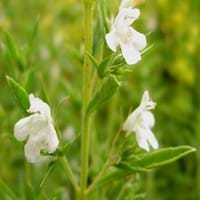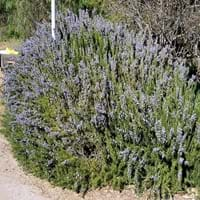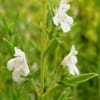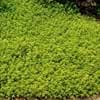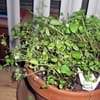Life Span
Perennial
Perennial
Origin
Europe, Southern Europe
Southern Europe, Mediterranean
Types
Not Available
Not Available
Habitat
All sorts of environments
By seashore, Rocky areas, Scrubs
USDA Hardiness Zone
6-9
8-11
Sunset Zone
3a, 3b, 4, 5, 6, 7, 8, 9, 10, 11, 14, 15, 16, 17, 18, 19, 20, 21, 22, 23, 24
H1, H2, 4, 5, 6, 7, 8, 9, 10, 11, 12, 13, 14, 15, 16, 17, 18, 19, 20, 21, 22, 23, 24
Habit
Clump-Forming
Prostrate/Trailing
Flower Color
White, Pink, Lavender
Blue, Lavender
Flower Color Modifier
Bicolor
Bicolor
Fruit Color
Not Available
Not Available
Leaf Color in Spring
Green, Gray Green
Green, Gray Green
Leaf Color in Summer
Green, Gray Green
Green, Gray Green
Leaf Color in Fall
Green, Gray Green
Green, Gray Green
Leaf Color in Winter
Light Green
Light Green
Leaf Shape
Lanceolate to elliptical
Needle like
Plant Season
Spring, Summer, Fall, Winter
Spring, Summer, Fall, Winter
Sunlight
Full Sun
Full Sun
Type of Soil
Loam, Sand
Loam, Sand
The pH of Soil
Neutral, Alkaline
Neutral, Alkaline
Soil Drainage
Well drained
Well drained
Bloom Time
Early Summer, Summer, Late Summer
Early Spring, Spring, Winter, Late Winter
Tolerances
Drought
Drought
Where to Plant?
Container, Ground, Pot
Ground
How to Plant?
Seedlings, Stem Cutting
Seedlings
Plant Maintenance
Medium
Medium
Watering Requirements
Average Water Needs, Keep the Soil well drained
occasional watering once established
In Summer
Lots of watering
Lots of watering
In Spring
Moderate
Moderate
In Winter
Average Water
Average Water
Soil pH
Neutral, Alkaline
Neutral, Alkaline
Soil Type
Loam, Sand
Loam, Sand
Soil Drainage Capacity
Well drained
Well drained
Sun Exposure
Full Sun
Full Sun
Pruning
In Early Autumn, Remove damaged leaves, Remove dead branches, Remove dead leaves
Remove damaged leaves, Remove dead branches, Remove dead leaves
Fertilizers
All-Purpose Liquid Fertilizer, Doesn't require fertilization when grown in rich soil
All-Purpose Liquid Fertilizer
Pests and Diseases
Free of serious pests and diseases
Red blotch, Whiteflies
Plant Tolerance
Drought
Drought
Flower Petal Number
Single
Single
Fragrant Bark/Stem
Yes
Yes
Foliage Texture
Fine
Fine
Foliage Sheen
Matte
Matte
Attracts
Butterflies
Hummingbirds
Allergy
Unknown
Skin rash
Aesthetic Uses
Farmland, Wild gardens
Not Available
Beauty Benefits
Not Available
Not Available
Environmental Uses
Air purification
Air purification
Medicinal Uses
Cramps, Diarrhea, Indigestion, Sore throat
Antiseptic, Antispasmodic, Cardiac
Part of Plant Used
Dried seeds, Flower Stalk, Flowering Tips, Flowers, Leaf Stalks, Leaves, Twigs
Leaves
Other Uses
Condiment, Used in flavouring curries, teas
Incense, Repellent, Used as a dye
Used As Indoor Plant
No
No
Used As Outdoor Plant
Yes
Yes
Garden Design
Container, Edging, Edible, Herb / Vegetable, Mixed Border, Rock Garden / Wall
Container, Edging, Edible, Groundcover, Herb / Vegetable, Rock Garden / Wall
Botanical Name
SATUREJA montana
ROSMARINUS officinalis 'Lockwood de Forest'
Common Name
Winter Savory
Lockwood de Forest Rosemary, Prostrate Rosemary, Rosemary
In Hindi
Winter Savory
गुलमेंहदी
In German
Winter-Bohnenkraut
Rosmarin
In French
Winter Savory
Rosmarinus officinalis
In Spanish
Satureja montana
Alecrim
In Greek
Satureja montana
prostrate rosemary
In Portuguese
Segurelha-das-montanhas
Rozmaryn lekarski
In Polish
Cząber górski
Rosmarinus officinalis
In Latin
winter savory
prostrate rosemary
Phylum
Magnoliophyta
Magnoliophyta
Class
Magnoliopsida
Magnoliopsida
Family
Lamiaceae
Lamiaceae
Genus
Satureja
Rosmarinus
Clade
Angiosperms, Asterids, Eudicots
Angiosperms, Asterids, Eudicots
Tribe
Not Available
Mentheae
Subfamily
Not Available
Nepetoideae
Number of Species
Not Available
Not Available
Season and Care of Winter Savory and Prostrate Rosemary
Season and care of Winter Savory and Prostrate Rosemary is important to know. While considering everything about Winter Savory and Prostrate Rosemary Care, growing season is an essential factor. Winter Savory season is Spring, Summer, Fall and Winter and Prostrate Rosemary season is Spring, Summer, Fall and Winter. The type of soil for Winter Savory is Loam, Sand and for Prostrate Rosemary is Loam, Sand while the PH of soil for Winter Savory is Neutral, Alkaline and for Prostrate Rosemary is Neutral, Alkaline.
Winter Savory and Prostrate Rosemary Physical Information
Winter Savory and Prostrate Rosemary physical information is very important for comparison. Winter Savory height is 30.50 cm and width 25.40 cm whereas Prostrate Rosemary height is 150.00 cm and width 180.00 cm. The color specification of Winter Savory and Prostrate Rosemary are as follows:
Winter Savory flower color: White, Pink and Lavender
Winter Savory leaf color: Green and Gray Green
Prostrate Rosemary flower color: Blue and Lavender
- Prostrate Rosemary leaf color: Green and Gray Green
Care of Winter Savory and Prostrate Rosemary
Care of Winter Savory and Prostrate Rosemary include pruning, fertilizers, watering etc. Winter Savory pruning is done In Early Autumn, Remove damaged leaves, Remove dead branches and Remove dead leaves and Prostrate Rosemary pruning is done Remove damaged leaves, Remove dead branches and Remove dead leaves. In summer Winter Savory needs Lots of watering and in winter, it needs Average Water. Whereas, in summer Prostrate Rosemary needs Lots of watering and in winter, it needs Average Water.
